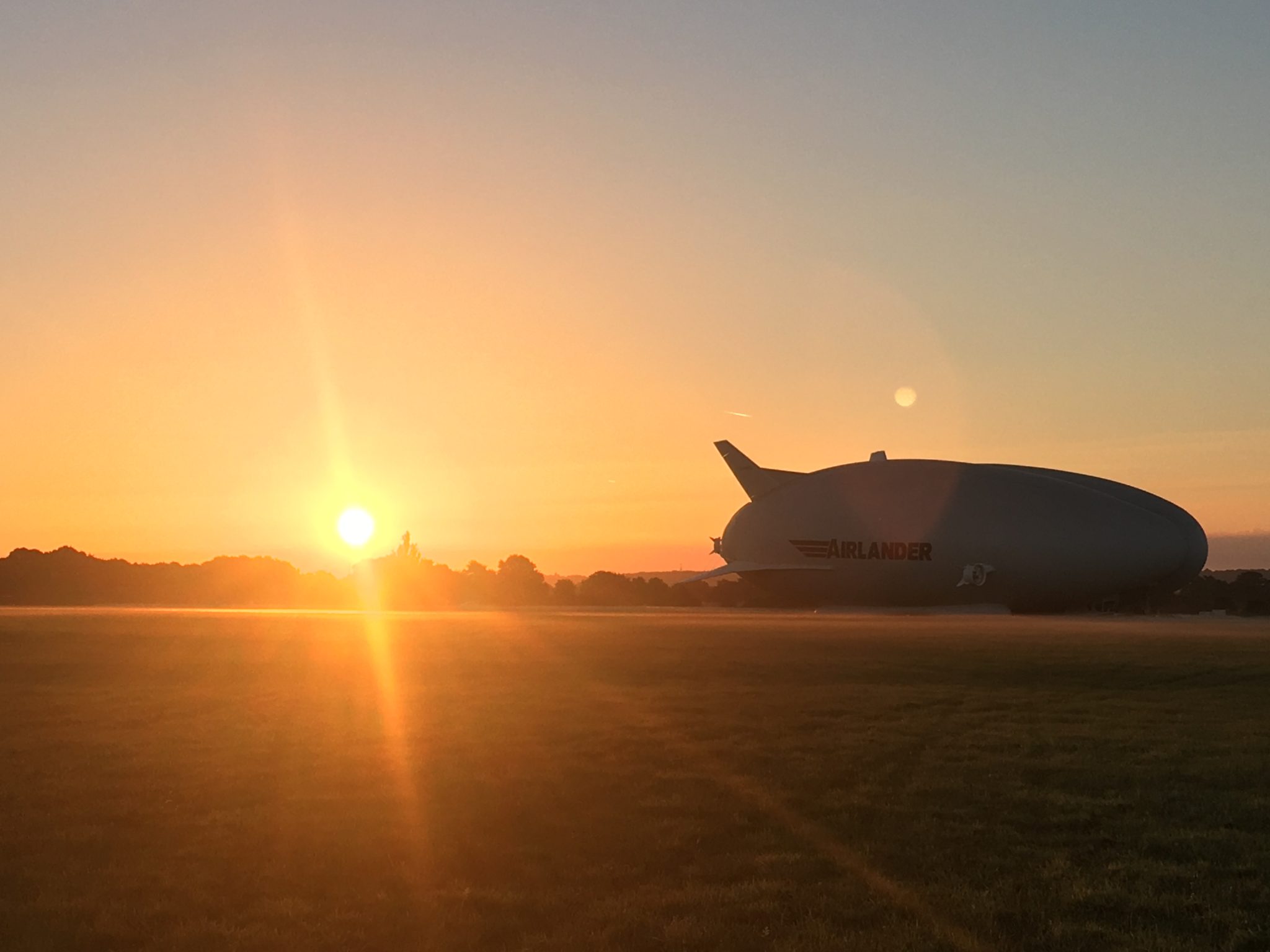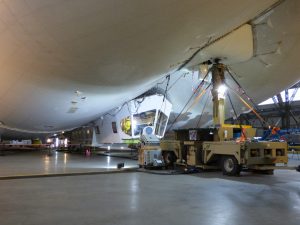
The Airlander 10 based in Cardington Sheds has revealed a number of improvements made to the £25 million airship in a bid to stop a repeat of its failed test flight last August.

The 302ft (92m) long aircraft – which is part plane and part airship – was damaged during its second test flight from Cardington Airfield last August.
All of the structural damage sustained on the flight deck has now been repaired – along with some extra upgrades added.
The Hybrid Air Vehicle team behind the project has added an Auxiliary Landing System, which allows the aircraft to land safely at a greater range of altitudes than before. Like a pressurised air cushion which contacts the ground during a landing, the new landing system has been fitted forward of the main landing gear.
Improvements have also been made to the ground support equipment in a bid to ‘reduce the chance of an equipment failure such as the problem with the mooring mast winch that triggered the incident in August last year’.
But Hybrid Air Vehicles is not announcing a ‘specific date’ for the Airlander’s next flight – dubbed the ‘flying bum’ because of its unusual shape. ‘Achieving a safe flight is the priority’, according to the statement.
A spokesman for the team added: “We are also modifying the aircraft to make sure that if the mooring line were ever to hang down from the aircraft again, as it did that day, it can be recovered so that it does not interfere with the approach and landing of the aircraft.
“Analysis of how the aircraft performed on its two August flights have been reviewed in detail to allow enhanced training in normal and emergency conditions for Airlander’s flight crew.
“We have extensively analysed and reviewed the telemetry data, and video/audio (both on-board and from the ground), which has allowed us to understand how the aircraft performed in great detail. We have fed the results of that work back into our simulator, which has allowed much more realistic training in normal and emergency conditions for our flight crew, which will help us to manage a wider range of potential scenarios than was previously the case.
“This will help the crew if they are again called upon to respond to unexpected events such as last August’s unplanned steep approach to the airfield, which was caused by the mooring line hanging down underneath it.”

Airlander is now in an extensive test phase prior to its next flight.
Tom Grundy, Operations Director, added: “Over this period the whole focus of the team has been to improve the way we work and the way we operate the aircraft so that our next stage of flying achieves all of our objectives.
“Our work in this has been guided by our investigations, which were conducted and reviewed in line with the exhaustive standards that are the norm across the aerospace industry.”
Hybrid Air Vehicles CEO, Steve McGlennan, added: “Throughout the last six months we have been heartened by the many messages of support from people outside our immediate business who understand the learning process that is at the heart of flight test.
“We have every confidence that, in delivering the key learning points that we have identified , we will be in a great position to deliver a safe, robust and effective flight test programme when we get back into the air.
, we will be in a great position to deliver a safe, robust and effective flight test programme when we get back into the air.
“We look forward to showing off the best of British innovation and Engineering to the world again very soon.”
www.bedfordshire-news.co.uk
